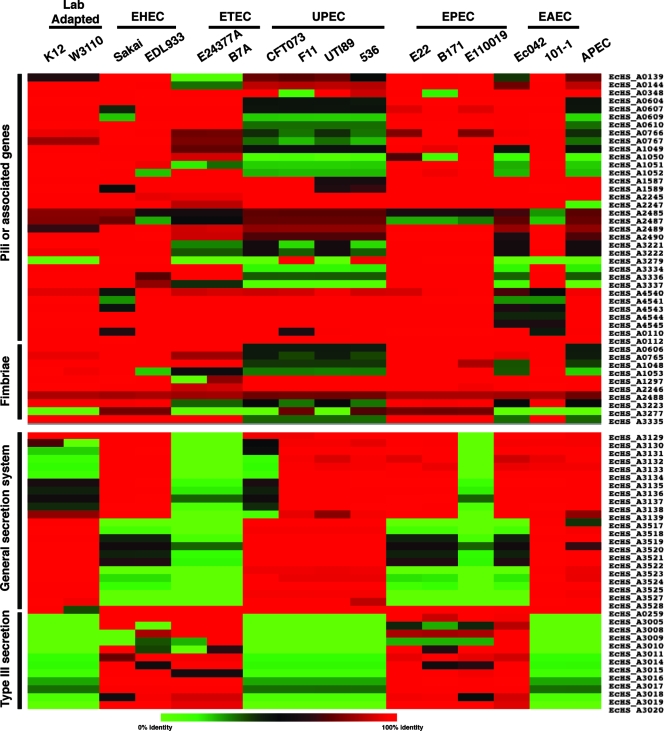FIG. 2.
Commensal features are often shared with one or more pathogens. Using E. coli HS as the reference, we identified regions, based on the annotation or similarity to known features, that could be associated with colonization of the human gastrointestinal tract. These regions were grouped into four general categories: pili or pilus-associated genes, fimbriae, general secretion, and type III secretion. Isolates are arranged in vertical lines, and each horizontal group is based on a single gene or peptide. The color indicates the level of similarity; red indicates the most similar (∼100% identical), green indicates little or no similarity, and black indicates ∼50% identity over the length of the sequence queried. It is clear that some pathogenic groups have features more or less similar to features of E. coli HS. Notably, the general secretion system genes for two separate systems are absent in both ETEC strains; however, they are present in three of four UPEC strains. The presence of one of the secretion systems is variable in EHEC, EAEC, and EPEC isolates, and the opposite phenotype is present in the laboratory-adapted strains, suggesting that this system may play a role in colonization.

